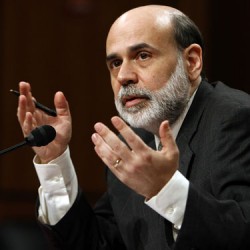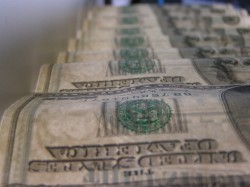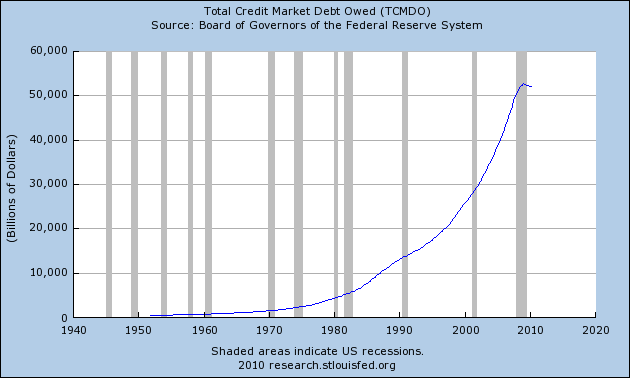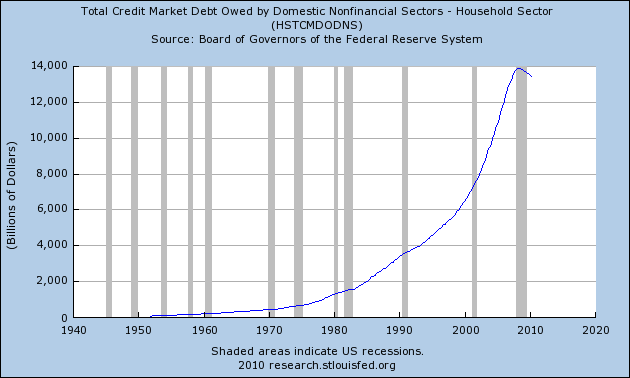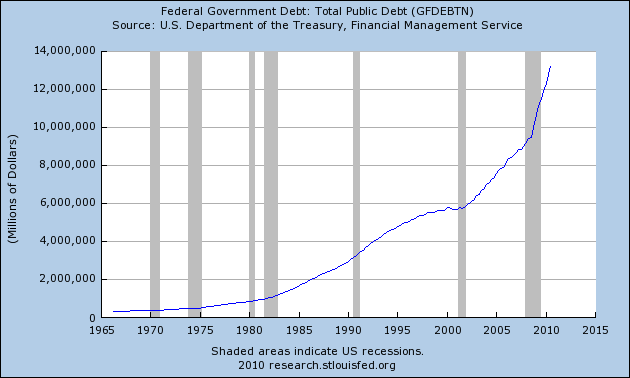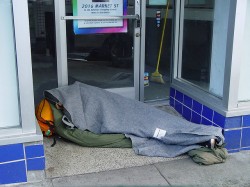 Today the financial world was buzzing with excitement because there was one moderately good piece of news for the U.S. economy. U.S. employers added 151,000 jobs during the month of October and the unemployment rate remained unchanged at 9.6%. This is certainly welcome news, but these days it seems as though there are at least ten pieces of bad economic news for every hopeful economic signal. So don’t get fooled when the U.S. economy takes one step forward, because it is about to take another dozen or so steps backwards. We are living in the middle of a nightmarish long-term economic decline that has been building for generations. The deindustrialization of the United States, the horrific trade deficit caused by globalization and the skyrocketing national debt are problems that have taken decades to develop. The Federal Reserve has been ripping the guts out of our financial system since 1913. These are not things that are going to be fixed overnight. In fact, there are some statistics that just keep getting worse and worse and worse as time goes by. We are heading straight for a devastating economic collapse and hopefully we can all warn as many people as possible while there is still time.
Today the financial world was buzzing with excitement because there was one moderately good piece of news for the U.S. economy. U.S. employers added 151,000 jobs during the month of October and the unemployment rate remained unchanged at 9.6%. This is certainly welcome news, but these days it seems as though there are at least ten pieces of bad economic news for every hopeful economic signal. So don’t get fooled when the U.S. economy takes one step forward, because it is about to take another dozen or so steps backwards. We are living in the middle of a nightmarish long-term economic decline that has been building for generations. The deindustrialization of the United States, the horrific trade deficit caused by globalization and the skyrocketing national debt are problems that have taken decades to develop. The Federal Reserve has been ripping the guts out of our financial system since 1913. These are not things that are going to be fixed overnight. In fact, there are some statistics that just keep getting worse and worse and worse as time goes by. We are heading straight for a devastating economic collapse and hopefully we can all warn as many people as possible while there is still time.
The more research that you do into our economic situation the more depressing it becomes. We are in big, big, big trouble. The following are 14 pieces of bad economic news that are so horrifying you might not want to read them standing up….
#1 More than 42 million Americans were on food stamps during the month of August. That is a new all-time record, and that number is 17 percent higher than it was one year earlier. In fact, the number of Americans on food stamps is up more than 58 percent since August 2007.
#2 The number of “persons not in the labor force” in the United States has set another new all-time record. The United States has not had such an extended bout of mass unemployment since the Great Depression. The “official” unemployment rate in the United States has been at nine and a half percent or above for 14 consecutive months.
#3 More than 1000 people now live in the 200 miles of flood tunnels that exist under the city of Las Vegas. Once one of the most prosperous cities in the United States, Las Vegas is now little more than a shiny, glittering corpse that it rapidly decaying.
#4 Poverty is absolutely exploding and it is hitting those who are the most vulnerable the hardest. According to one recent study, approximately 21 percent of all children in the United States are living below the poverty line in 2010.
#5 In the past 60 days alone, the price of cotton is up 54%, the price of corn is up 29%, the price of soybeans is up 22%, the price of orange juice is up 17%, and the price of sugar is up 51%.
#6 One out of every six Americans is now enrolled in at least one anti-poverty program run by the federal government.
#7 The American Bankruptcy Institute says that there will be about 1.6 million consumer bankruptcies in 2010. That would represent a huge increase over 2009.
#8 According to one recent survey, 28% of all U.S. households have at least one member that is looking for a full-time job.
#9 The individual U.S. states are mostly flat broke. For example, it is being reported that the 15 largest U.S. states spent on average over 220% of their tax receipts over the past decade. Clearly this is not even close to sustainable.
#10 The U.S. government is completely and totally broke. After analyzing Congressional Budget Office data, Boston University economics professor Laurence J. Kotlikoff concluded that the U.S. government is facing a “fiscal gap” of $202 trillion dollars.
#11 In an attempt to keep our financial system solvent, the U.S. Federal Reserve has announced plans to create $600 billion out of thin air and pump it into the U.S. economy. The Fed is calling this “quantitative easing“, but what they should really be calling it is “cheating, debasing and inflating”.
#12 Many of the major trading partners of the United States are expressing deep resentment regarding the new quantitative easing policy announced by the Fed. Ambrose Evans-Pritchard recently described the growing animosity this way….
Li Deshui from Beijing’s Economic Commission said a string of Asian states share China’s “deep bitterness” over dollar debasement, and are examining ways of teaming up to insulate themselves from the tsunami of US liquidity.
#13 For many analysts, the economic collapse of the United States comes down to cold, hard math. For example, the former CEO of the tenth largest bank in the United States says that it is a “mathematical certainty” that the U.S. government will eventually go bankrupt.
#14 According to a recent article on CNBC, the financial world is already buzzing about QE3….
“They’re already talking about QE3,” said Dave Rovelli, managing director of US equity trading for Canaccord Adams. “Eventually we’re going to be printing so much money the dollar is going to really go down and everybody’s going to try to deflate their currency against us. I just don’t know how this could end well.”
So is that all the Federal Reserve has left?
Are they just going to keep pouring bags of money into the economy until things get back to “normal”?
Are we going to have “Quantitative Easing 3”, “Quantitative Easing 4”, and “Quantitative Easing 5”?
It has been a long-running joke, but perhaps by the end of this thing Ben Bernanke will literally go up in a helicopter and start shoveling out huge piles of cash over the countryside.
The era of great prosperity that we have all enjoyed for so long is coming to an end. It would be advisable to use the remaining period of economic stability that we still have to prepare for what is ahead.
These economic problems could have been fixed decades ago if people would have actually listened and would have followed sound economic principles on an individual and on a corporate level, but that did not happen.
Now we are up to our eyeballs in debt and the greatest economic machine in history is rotting all around us.
We are in deep, deep, deep trouble and denying it is not going to make it go away.
